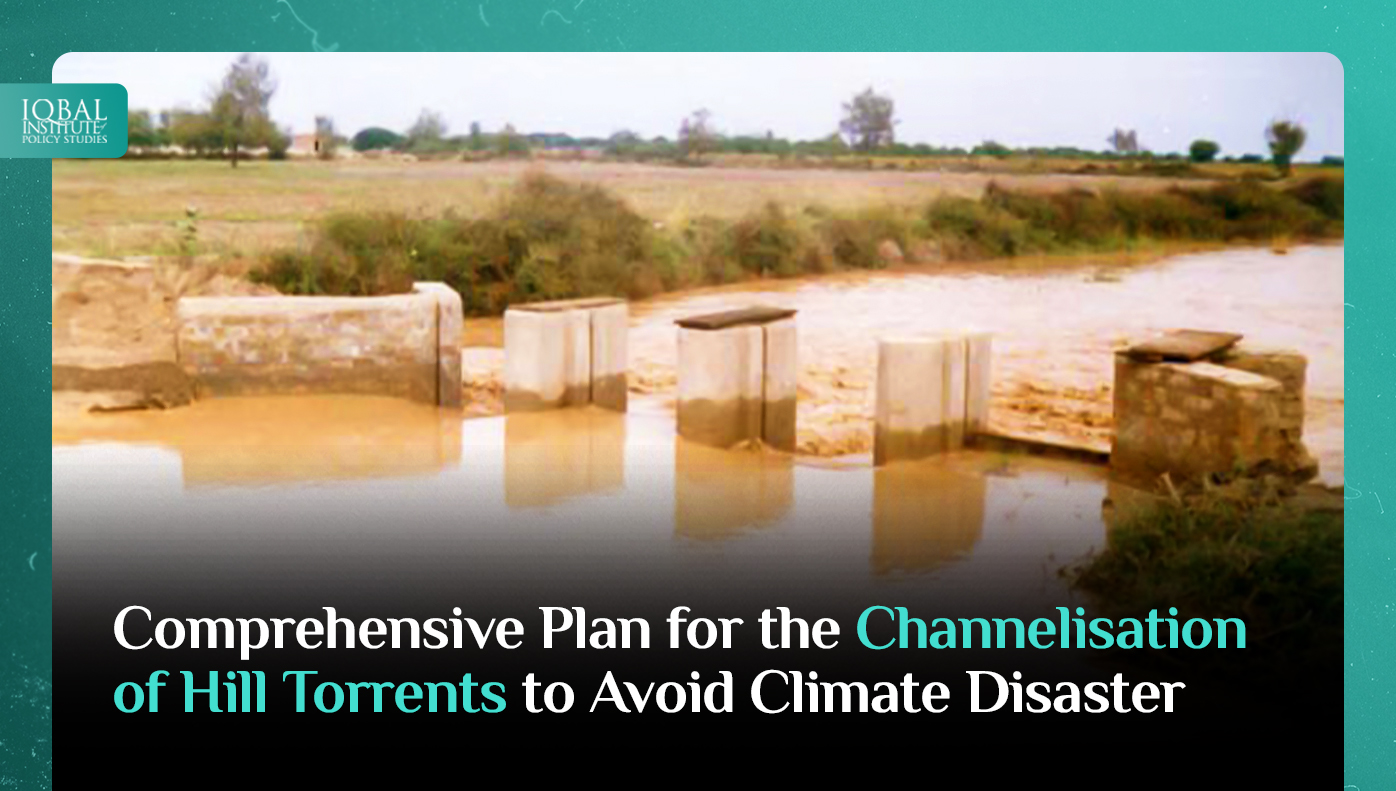Hill torrents (known as Roth Kohi) are distinct types of waterways in which water drains from the mountains and hits the localities and infrastructure in its way with enormous speed. More than 200 hill torrents originate west of Sulaiman Range and hit Taunsa, Dera Ghazi (D.G.) Khan and Rajanpur Districts of Punjab in Pakistan. Among these, 13 hill torrents have large catchment areas and flood potential. Hill Torrents are generally associated with uncertain flood flows that cause loss of billions of rupees to infrastructure, houses and irrigated lands.
In Pakistan, there is hardly a proper utilisation mechanism for flood water from hill torrents. Due to the poor government policy and lack of channelisation of hill torrents, the country has faced the disastrous impacts of flash floods. To avoid further disasters and meet the challenges of climate change, the government, along with the Irrigation Department, has devised a comprehensive plan for channelling hill torrents from the Sulaimani Range. In this context, the PC-1 for the Channelisation plan will be approved soon by the country’s Irrigation Department. Earlier, these hill torrents were the main sources of traditional irrigation systems. Later, the local farmers installed water turbines and encroached on most natural paths toward the Indus.
In the past, a number of studies and plans were suggested to manage the Hill Torrent Floods in the country. However, no such improvement has been seen in using hill torrents for irrigation to uplift the area’s economy. However, this new plan is a long-term solution for mitigating climate change disasters. Under this plan, the authorities recommended developing mid-level dams, in the long run, to store water and develop a good command area. The plan also focused on the revival of the traditional and natural paths for clear drainage passage to the Indus river and added dispersion structures to mitigate the momentum of gushing waters.



Leave a Reply